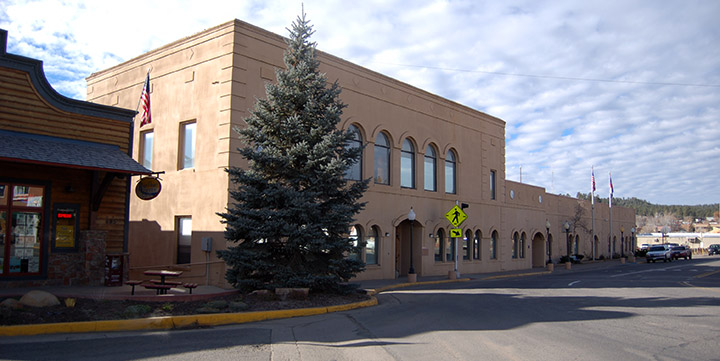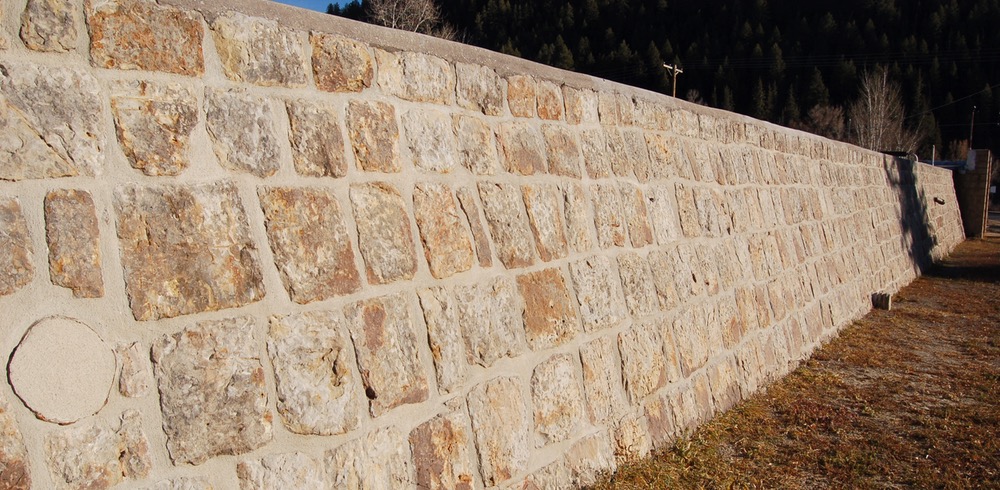We know history is important. But not too important.
We also know that preserving and restoring old things — old things that no longer function as efficiently as they once did — can be really expensive. So our local governments sometimes get confused about their mission. Should we even bother with historic buildings? And if we should, which historic structures are worth the investment?
From what I can tell from attendance at numerous local government meetings over the past 15 years, the Archuleta County Courthouse is generally considered to have zero historical value. It’s also considered to have zero potential as a structure that could be upgraded, remodeled, and re-purposed. Pretty much everyone who has their hand in the taxpayers’ pockets seems to feel that developer David Brown had the right idea back in 2007: tear the old thing down and build something brand new. A retail space, for example, with offices upstairs. Or a big new hotel. Something snazzy, with a great view of the San Juan River, the Springs Resort and the Geothermal Greenhouses.
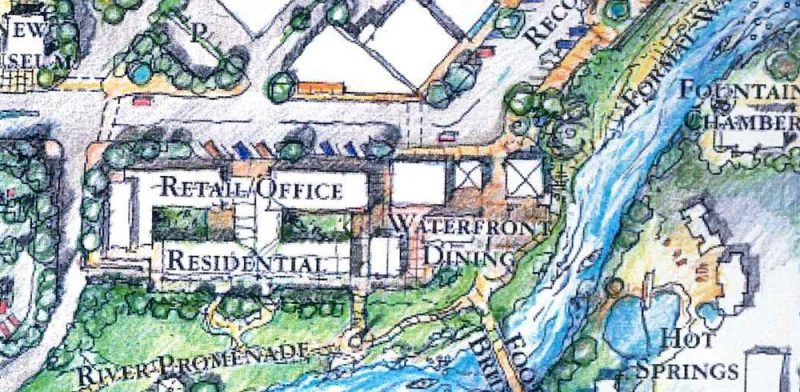
Of course, this is foolish talk, in our current situation. Downtown Pagosa Springs can hardly support its existing retail outlets, nearly all of which now depend upon sales of t-shirts and tourist souvenirs.
But that doesn’t mean we can’t do some authentic historical preservation.
Back in 2015, the Town of Pagosa Springs Planning Department and the Historic Preservation Board got some exciting news. The State Historical Fund sent a letter stating that they wanted to support the preservation of the Rumbaugh Creek stone arch bridge with a $166,000 grant. Apparently, this classic bridge, long hidden behind the crumbling Water Works structure on 1st Street, was threatening to fall completely apart. This preservation project — unlike a politically-charged project like the 1928 County Courthouse — seemed like a perfect vehicle for spending state and local taxes in a effort to save something old.
No need to deal with county commissioners. No need to fight with private property owners.
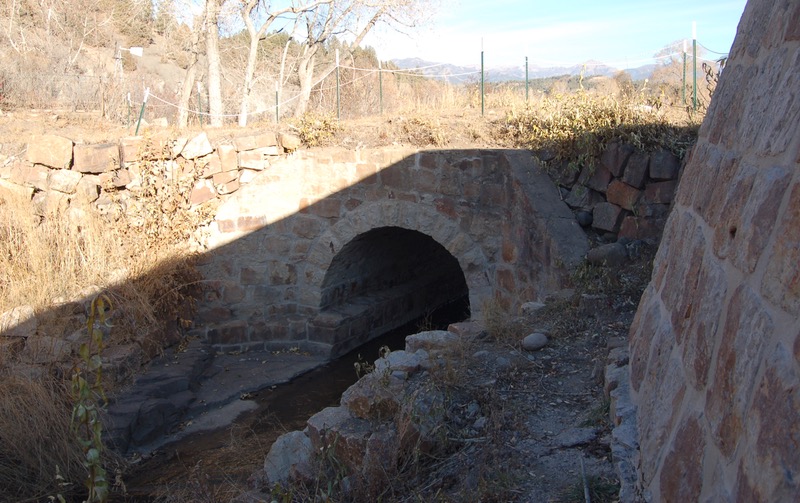
The restoration project at Rumbaugh Creek has been going on since 2015, and it appears that one of the most pressing issues has been handled successfully. The classic stone arch — an example of historical masonry technique no longer practiced in Southwest Colorado, replaced now by steel girders and reinforced concrete — itself has been “stabilized”.
But although the stone arch itself appears stable, the retaining wall on the east side of the bridge — a rather tall and perhaps important retaining wall, also constructed of local stone — is not in such great shape.
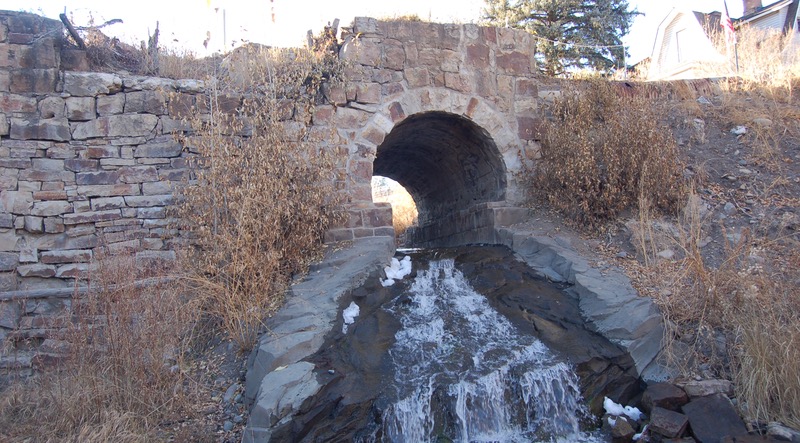
On the left side of the photo, we see that the retaining wall appears unstable. On the right side of the photo, we see that the retaining wall is non-existent.
According to the Town’s draft 2020 budget, it appears that another $270,000 will be spent on the Rumbaugh Bridge restoration project, with most of the funding coming once again from the State Historical Fund. It’s easy to assume the money will help address the retaining walls.
So at least part of the historical problem seems under control, thanks to a total investment of state and local tax revenues of about $579,000. But, as anyone who has remodeled an old house knows, you sometimes open a can of worms when you start a restoration project.
One interesting thing, perhaps worth mentioning. No one has actually been using this bridge, in the sense of “walking across it to get somewhere”, for probably 100 years. The trail across the bridge, heading north, essentially dead-ends against some private property.
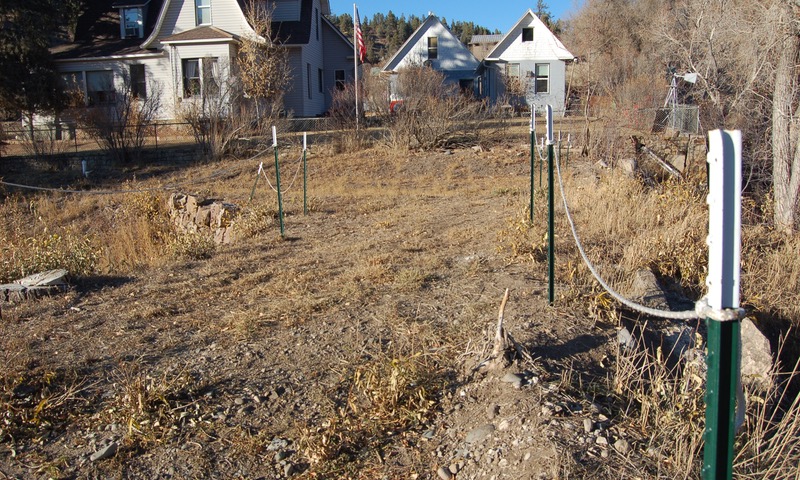
I’ve lived in downtown Pagosa for nearly all of the past 26 years, and I had never known that the Rumbaugh Bridge existed. No doubt adventurous neighborhood boys occasionally discovered its location — and perhaps played beneath the unstable arch structure, not realizing its historical importance — but other than that, I suspect nearly all Pagosans have lived their lives contentedly ignorant of the bridge’s existence.
The same cannot be said, however, for the Water Works structure adjacent to the bridge. That imposing stone structure occupies most of the property on the east side of North 1st Street, between Highway 160 and Lewis Street.
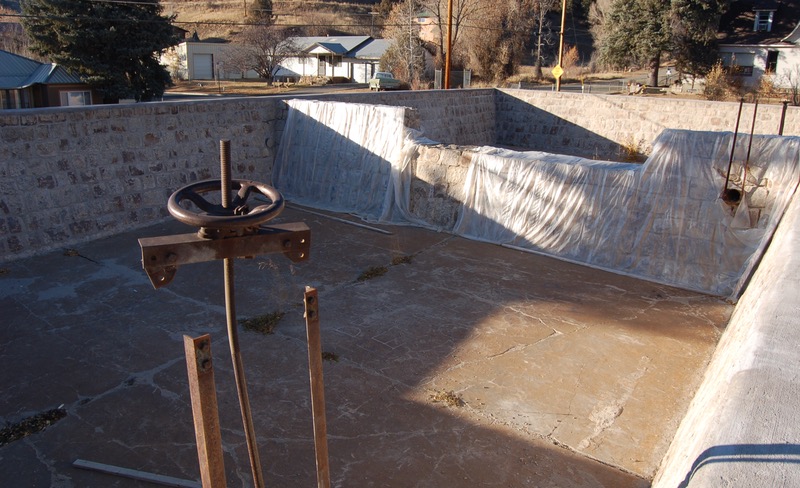
This rather massive stone structure is attached to the Pagosa Springs History Museum. Like the Rumbaugh Bridge, it ceased providing a useful function decades ago, and had been slowly falling apart until the Town obtained a State Historic Fund grant to help pay for repairs to the cracked mortar. According to Town budgets, it looks like the taxpayers have spent about $246,240 thus far, fixing a building that has no apparent use.
But the structure now looks almost brand new, along its west face.
That’s the way we like our history, apparently. Really old things that no longer have any use, looking as if they were just built.
Around the back side, we can see what the Water Works stone wall looked like before the renovation began. One bulging section of the stone wall will presumably need to be rebuilt completely, if the Water Works structure is to be completely stabilized? I have no idea what that kind of repair might cost the taxpayers.

And once the Water Works and Rumbaugh Bridge are historically restored… we will then have a couple of older stone structures at the east end of downtown to remind us that, once upon a time, Pagosa pioneers built things with the intention that they would last for centuries. Except they didn’t last for centuries. We had to spend close to $1 million repairing them, long after anyone was still making any use of them.
But if we have a functional building, still serving the community, half of which was built during the same historical era? A classic building where people still conduct important business?
Worthless. Tear it down.
